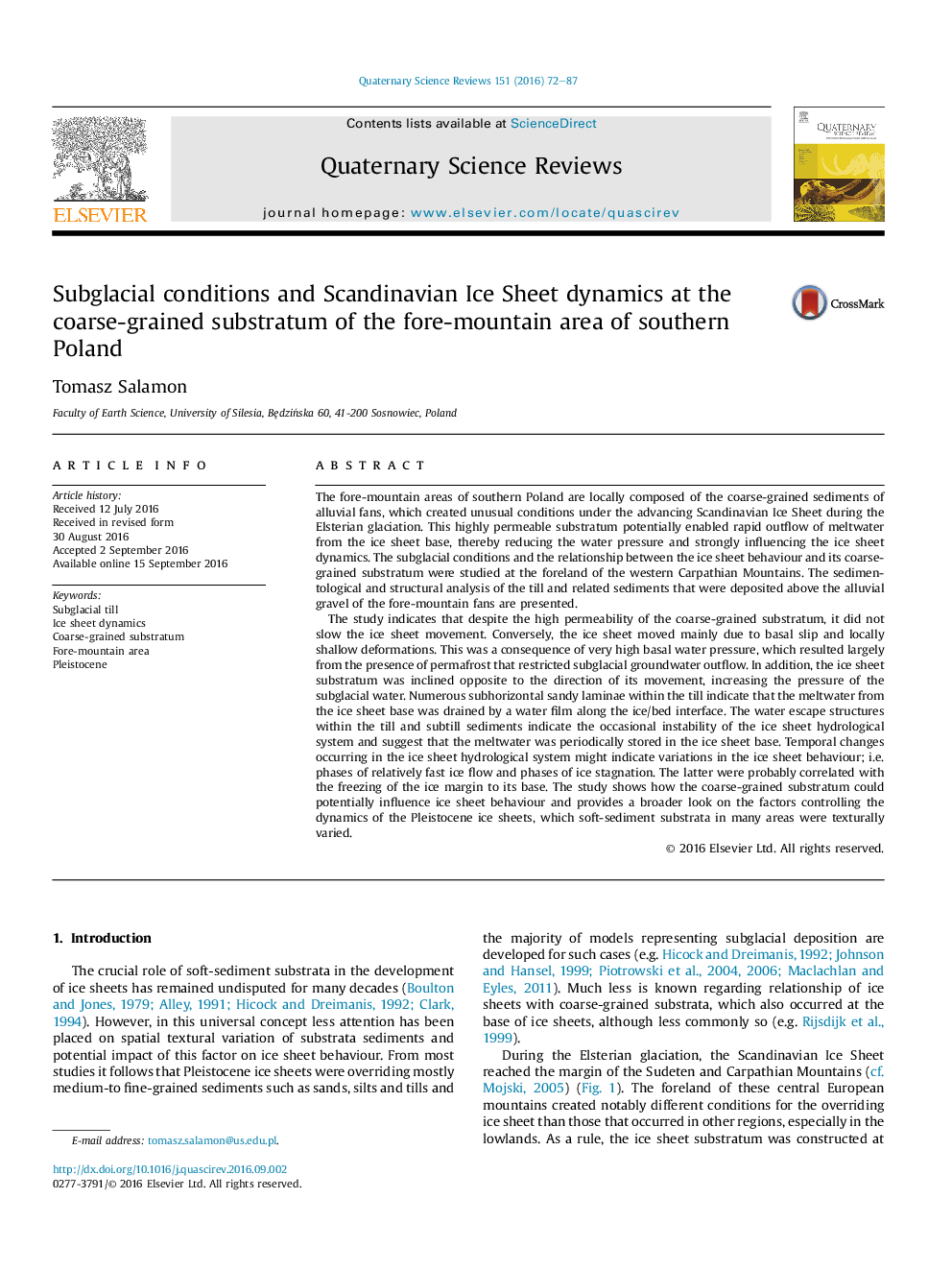| Article ID | Journal | Published Year | Pages | File Type |
|---|---|---|---|---|
| 6445937 | Quaternary Science Reviews | 2016 | 16 Pages |
Abstract
The study indicates that despite the high permeability of the coarse-grained substratum, it did not slow the ice sheet movement. Conversely, the ice sheet moved mainly due to basal slip and locally shallow deformations. This was a consequence of very high basal water pressure, which resulted largely from the presence of permafrost that restricted subglacial groundwater outflow. In addition, the ice sheet substratum was inclined opposite to the direction of its movement, increasing the pressure of the subglacial water. Numerous subhorizontal sandy laminae within the till indicate that the meltwater from the ice sheet base was drained by a water film along the ice/bed interface. The water escape structures within the till and subtill sediments indicate the occasional instability of the ice sheet hydrological system and suggest that the meltwater was periodically stored in the ice sheet base. Temporal changes occurring in the ice sheet hydrological system might indicate variations in the ice sheet behaviour; i.e. phases of relatively fast ice flow and phases of ice stagnation. The latter were probably correlated with the freezing of the ice margin to its base. The study shows how the coarse-grained substratum could potentially influence ice sheet behaviour and provides a broader look on the factors controlling the dynamics of the Pleistocene ice sheets, which soft-sediment substrata in many areas were texturally varied.
Keywords
Related Topics
Physical Sciences and Engineering
Earth and Planetary Sciences
Geology
Authors
Tomasz Salamon,
